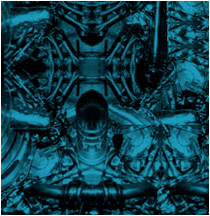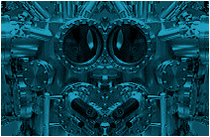
Diller
+ Scofidio
Bad Press
Ted Kruger
Metardermis- Like a Second Skin
Yehuda Safran
Planet Zaha Hadid And Souo de Moura
Bad Press
Ted Kruger
Metardermis- Like a Second Skin
Yehuda Safran
Planet Zaha Hadid And Souo de Moura


"Bad Press"
At the end of the 19th century, the body had come to be understood as a mechanical component of industrial productivity, an extension of the factory apparatus. Scientific management sought to rationalize and standardize the motions of this body, harnessing its dynamic energy and converting it to effcient labor power. According to Anson Rabinbach, «the dynamic language of energy was central to many utopian social and political ideologies of the early 20th century: Taylorism, bolshevism, and fascism. All of these movements viewed the body both as a productive force and as a political instrument whose energies could be subjected to scientifcally designed systems of organization.»
It was not too long before the practice of engineering bodies for the factory was introduced into the office, the school, and the hospital. By the first decade of the twentieth century, scientific management was brought into the home and applied to domestic housework. Time-motion studies, developed to dissect every action of the factory laborer with the intention of designing ideal shapes of movement and, ultimately, the ideal laborer, were imported into the home to scrutinize every movement exerted in housekeeping in order to produce the ideal housewife. (The term "housewife", which had been in use since the thirteenth century in Europe, required a re-conceptualization of both "wife" and "house" in relation to the servantless, middle-class American household of the 1920s.) The body of this housewife, was interpreted by scientific management as a dynamic force, with unlimited capacity for work. Her only enemy was fatigue, and fatigue, in broader terms, undermined the moral imperative of the new social reform - the reclamation of all waste as usable potential.
The application of labor-saving techniques from scientific management, in conjunction with the introduction of household appliances, the new "electric servants," sought to conserve the physical expenditure of the housewife in the 20´s. The time and energy saved, according to the rhetoric of "efficiency," would release the woman from the home and thus enable her to join the paid labor force.
The drive for efficiency, however, did not fulfill its liberating promise. Efficiency was often taken as an objective in itself. Ironically, it condemned the housewife to an increased work load as the expectations and standards of cleanliness in the home rose to compulsive levels. The discovery of the "household germ" and the proliferation of germ theory galvanized a link between dirt and disease. Dirt soon became a moral construct yielding sexual, religious and aesthetic distinctions. The fetishization of hygiene blurred the problem of cleanliness with beauty, chastity, piety, and modernity. As efficiency targeted domestic space and the domestic body alike, the design of the interior succumbed to paranoid hygiene. The dust and germ-breeding intricacies of the nineteenth century interior collapsed into pure surface - white, smooth, flat, non-porous and seamless - under the continuous disciplinary watch of the housewife. Despite the unrealized aspirations of scientific management´s application to housework for the liberation of the housewife, daily work in the home continued to become increasingly rationalized by the women condemned to staying there. According to Phyllis Palmer, in order to «remove the stigma from what was considered to be service-oriented menial labor of the female, daily housework between the 1920s and 40s was progressively masculinized and re-configured into a more comprehensive economic management of the household.» The home economist now combined the skills of the nutritionist, the doctor, the accountant, the child care specialist, and the informed consumer. Notwithstanding this new characterization, the actual physical labor involved in housework remained, in the words of Palmer, «just as demanding and distasteful as it had ever been. The dirt previously absorbed by the body of the servant was now a direct concern to the woman of the house.» In the servantless household of the first half of the century, the maintenance of the idealized female body, that exhibited no evidence of decay, had become a project of devotion equal to that of the maintenance of idealized domestic space. Both were dedicated to preventing the corrosions of age and to the daily restoration of an ideal order whose standards and values were produced and sustained in the popular media. Today, home and body maintenance have found a new conjunction: household chores can be incorporated into a daily aerobic regimen and performed to the beat of a television fitness trainer with countless other viewers. Even though housework is slowly becoming less gendered and the discrete sites of "work" and "leisure" are becoming exchangeable, most conventions of domestic maintenance remain unchallenged. Housework´s primary activities of managing dirt and restoring daily order continue to be subjected to the economic ethos of industry, guided by motion-economy principles, originally designed by efficiency engineers. Take, for example, the procedure for ironing a manęs shirt defined by a 1960s housekeeping manual:
excerpt Center the back of the shirt on an ironing board with the yoke taught. Lifting the iron as little as possible, draw the iron, with its point facing the collar down the yoke to the rear tail hem and press the box pleat, using unhurried, well-directed, rhythmic motions. To avoid unnecessary manipulation of the garment, rotate the shirt in the following sequence: first, counterclockwise over the ironing surface to expose the left front panel. Press. Pause when pressing each button hole and pocket, allowing the steam to penetrate the fabric facing and inner band. Next, rotate the shirt clockwise to expose the right front panel and press, rotating the tip of the iron around every button. Slide the right shoulder yoke over the tip of the ironing board and press. Repeat with the left shoulder yoke. Lay out the right sleeve with the placket facing up and iron diagonally across the sleeve width from the underarm seam joint to the upper edge of the sleeve cuff, pressing in a sharp crease. Repeat this procedure for the left sleeve. With the rear yoke centered, press the undercollar and collar crease, working the sole plate toward the collar tips. Turn the shirt over with its front facing up and fasten the buttons. Using the Z-method to eliminate unnecessary movements of garment and arms, turn the shirt over. Fold the left rear facet in, toward the center, pressing in a sharp crease from the outer edge of the yoke shoulder, 2 1/2 inches out from the undercollar seam to the tail hem. Fold the left sleeve 45 degrees at the shoulder seam so that the length of the sleeve runs parallel along the length of the rear facet crease and press. Repeat this procedure for the right rear facet and right sleeve. Fold the shirt tail 1/3 of the way toward the collar. Fold 1/3 over again to the yoke, ensuring that all edges are aligned and form ninety degree corners. Using the Z-method, turn the shirt over with its front facing out and press lightly. With the advent of the electric iron, the task of ironing became progressively governed by minimums, both aesthetic and economic. A minimum of effort is used to reshape the shirt through a minimum of flat facets into a two-dimensional, repetitive unit which will consume a minimum of space. This shirt will exhibit a minimum of creases when worn, particularly in the exposed area between the lapels of the jacket. The standardized ironing pattern of a man's shirt habitually returns the shirt to a flat, rectangular shape which fits economically into orthogonal systems of storage - at the site of manufacture, the factory-pressed shirt is stacked and packed into rectangular cartons which are loaded as cubic volume onto trucks and transported to retail space where the shirt's rectangular form is reinforced in orthogonal display cases and then, after purchase, sustained in the home on closet shelves or in dresser drawers, and finally, on trips away from home, in suitcases. The shirt is disciplined at every stage to conform to an unspoken social contract.
When worn, the residue of the orthogonal logic of efficiency is registered on the surface of the body. The parallel creases and crisp, square corners of a clean, pressed shirt have become sought after emblems of refinement. The by-product of efficiency has become a new object of its desire.
But what if the task of ironing would free itself from the aesthetics of efficiency altogether? Perhaps the effects of ironing could more aptly represent the postindustrial body by trading the image of the functional for that of the dysfunctional. A practice of dissident ironing, relieved of the burdens of propriety could, perhaps, evolve new codes. Take, for example, the covert language developed in recent years by state prison inmates assigned to laundering detail. Seemingly superfluous, decorative creases pressed into the clothing of other inmates are now understood to be invested with representational value - a system of cyphers recognizable solely to the participants. Like the prison tattoo, the crease has become another mark of resistance by the marginalized. But where the tattoo acts directly on the skin, the only possession left to an inmate, the crease acts on the institutional skin - the prison uniform - a defacement all the more subversive in its camouflage. The crease resists appropriation more so than the tattoo because its abstract language, unlike the typically pictorial language, is illegible to the uninitiated. The articulations produced by a practice of dissident ironing could, like the system developed by inmates, reprogram the codes of efficiency.